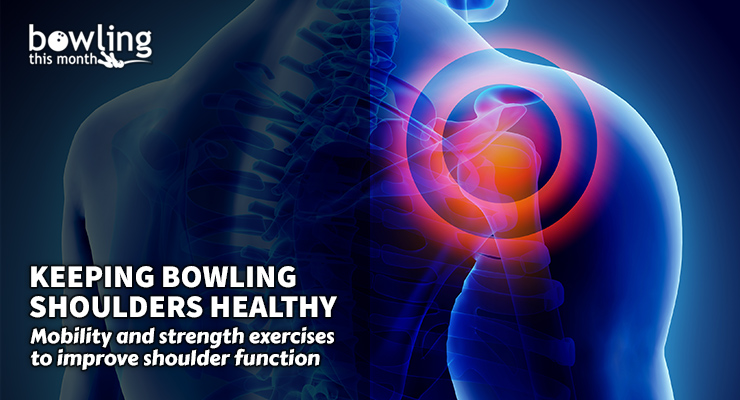Article Contents
- 1. Meet your shoulder
- 1.1. Why strengthening your shoulders is important
- 2. Mobility drills
- 2.1. Posterior capsule and lat mobilization
- 2.2. Wall slides
- 2.3. Soft tissue mobilization
- 3. Strength training exercises
- 3.1. Recommendations regarding pushing and pulling
- 3.2. Landmine press
- 3.3. Face pulls, band pull-aparts, and lat pulldowns combination
- 3.4. Dumbbell rows
- 3.5. Push-ups
- 4. Final thoughts
Note: This article is only available to Bowling This Month subscribers.
In my last article, I covered some key mobility and strengthening exercises to keep the knee joint healthy. After many of our readers reported this as being very helpful, I decided to continue that theme by detailing some ways to keep the shoulders healthy.
There is limited research on the common injuries experienced by bowlers. However, Briana Zabierek worked to publish research during her master’s program regarding the injuries experienced by collegiate bowlers. This gives us the start of some formal, factual data to understand injuries in our sport. Of course, more research is needed, and this is just scratching the surface by focusing on a specific group (college bowlers). Nonetheless, her findings about the prevalence of shoulder and wrist injuries are eye-opening.
In my experiences over the last 15 years, I have noticed much hesitancy from bowlers to include upper-body strength training in their exercise regimens. There seems to be a fear of losing mobility or freedom of the armswing, and thus, many bowlers place a larger emphasis on lower body and core training. Could this be a reason for more injuries being reported in the shoulder and upper body? That is very possible, and let me explain why by giving a brief overview of how the shoulder joint actually works.
Meet your shoulder
The shoulder joint is more formally known as the glenohumeral joint. This is a ball and socket joint in which the head of the humerus bone of the upper arm sits within the glenoid cavity, which is the socket on the scapula (shoulder blade). A ball and socket joint has the most movement of any joint type in the body. The shoulder can protract, retract, rotate, flex, extend, abduct, and adduct, which is to say that it can move in all planes ...
Already a premium member? Click here to log in.


